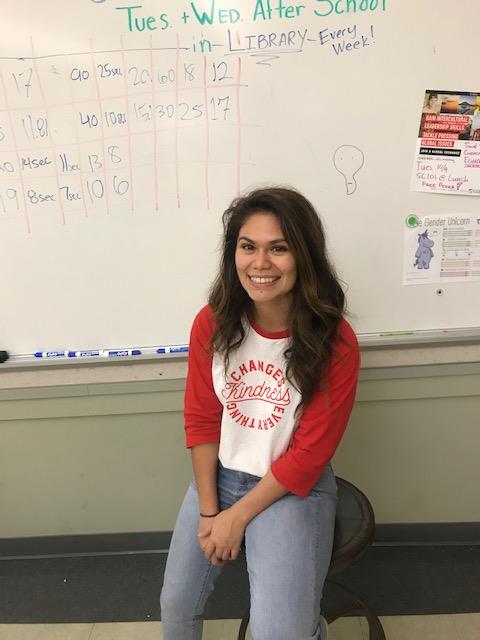Every Day is Not a Failure for New Teacher Ms. Paiz
November 26, 2018
“Every day feels like a failure,” says Ms. Paiz, a first year teacher starting her teaching career at San Rafael High.
From being a part-time student teacher in 2017 to now a full-time Biology teacher in 2018, Sabrina Paiz has committed herself to teaching in the San Rafael High School community.
Earlier in her life, Ms. Paiz worked at the Rocky Mountain Chocolate Factory, attended UC Davis, helped Special Ed. students, and went to Dominican University to get her teaching credentials. Following this she became a student teacher for Rachel Kalish, and now teaches her own Biology class. It’s been a journey with many highs, along with some lows.
Unfortunately for Ms. Paiz, her high school experience was vastly different from that of many of the students attending Marin County schools. She was forced to attend a school where flunking students from the primary high school were sent to. Surrounded by an environment where nothing was expected of her, she was merely a placeholder for the school to continue running.
However, now looking back, Ms. Paiz brings what she learned from her time in Orange County to the classroom.
“I try to teach the kids that it is unacceptable to stay stagnant and not move forward.”
Monday through Friday, morning to afternoon, Ms. Paiz stands in the center of the room, in front of every student. She almost mimics the same stance of Ms. Kalish, the teacher she worked under the prior year.
It’s as if a torch has been passed down to Ms. Paiz from Ms. Kalish, who left after last year to teach in Dubai.
To help Paiz with her transition, Dominican University requires every new teacher to find a mentor to help them with lesson planning, work ethics, and class management ideas. Paiz handpicked Ms. O’Neill, a Biology teacher at SRHS, to fill this role.
O’Neill explains, “She really tries to make her material engaging and relatable for the students.”
“We meet with each other for at least one hour every week,” says O’Neill. Either after school, or for two whole lunches. It really depends on our schedules.”
Being such a young teacher enables Ms. Paiz to be active around the class. Instead of sitting in her chair waiting for her students to copy down the notes, she becomes a lively presenter using body motions and easy to understand questions to engage her audience.
Commotion fills the classroom filled with 28 students divided between five rows of desks. The disturbance, however, is about science.
In such a short amount of time she has been able to create a strong bond with her classes, even though she’s new.
Tuesdays and Wednesdays after school, Ms. Paiz takes about a 20-minute break before heading down to the school library to tutor students seeking help. She wants to become a person on whom students can rely.
When Paiz isn’t busy being a teacher, she likes to visit the farmer’s market, hike, or distract herself with a workout at the Fitness SF gym.
Three months after the beginning of school, Ms. Paiz has tried her best to help and teach her freshman students to the very best of her abilities.
However, to her, “everyday is a failure.”
Everyday, she believes she could have done better. She could have explained her notes better, helped a student she knows is struggling better, or engaged her class better.
Everyday is a learning experience for a new teacher, something she hopes her classes of freshmen never find out.
As far as she knows, this seems to be working.
“This is one of my favorite classes. Ms. Paiz is a really good teacher and you can tell she likes to teach. She knows what she’s talking about, “ says Seamus Lubamersky, a freshman from one of her college prep Biology classes.
However, he also expresses some concerns. “She’s really nice but some people may take advantage of that.”
This may be true to a certain extent. Paiz has already threatened to keep students after school if they do not make progress with their classwork. This was a protocol inserted after she had up to seven students failing.
Since then she has reduced this number to just two students.
Her goal is to create an environment where no one stays static and no one gets away with not doing their work.
She’s already managed to create a trustworthy bond where her students believe her threats, by being straightforward and not putting a wall between her and the students. She uses proper communication and strays away from being, in her words, “fake.”
Last year, Ms. Paiz to me was a complete stranger who shadowed Mrs. Kalish’s class and took notes. This year, now I have shadowed Ms. Paiz. Instead of a stranger, I see a respectable teacher with a bright future ahead of her, a woman who will improve our community. San Rafael High is lucky to have her.






































